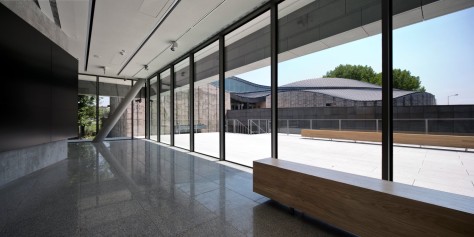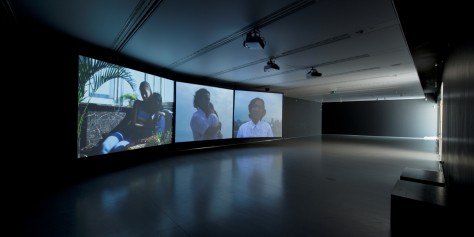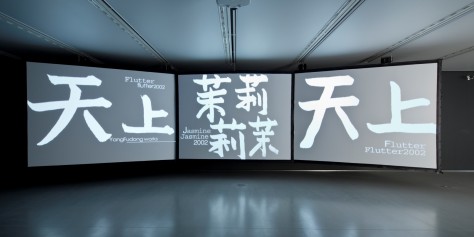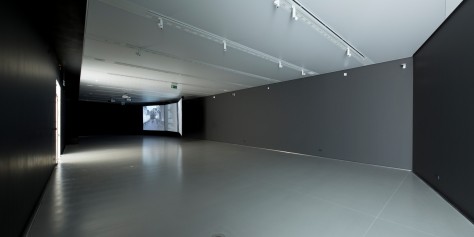
The Project Idea
The year 2015 marks twenty-eight years since the publication of Tygodnik Powszechny magazine’s interview in which Andrzej Wajda announced his intention to create a Museum of Japanese Art and Technology in Kraków – a permanent venue for exhibiting Feliks ‘Manggha’ Jasieński’s collection of Japanese art. Following that project more were launched on Wajda’s inspiration: the Tea Pavilion with a garden, the Japanese Language School, the Wyspiański 2000 Pavilion, and now the most recent development – an exhibition annex to the Manggha Museum called Europe–Far East Gallery.

The idea for the new building came up in 2004 in connection with the Manggha Museum’s acquisition of the small plot of land adjacent to its site, along ul. Konopnickiej. The project initiators’ main objective was to broaden the scope of its intercultural artistic and exhibition activities – from Polish-Japanese to European-Far Eastern – which coincided with Poland’s accession to the European Union. The new exhibition space was intended for presentations of European art and the cultures of Southeast Asia, including the Indian Peninsula. The programme of the Gallery provides for shows of old and recent art.

The new building has two exhibition rooms on two storeys. As intended by the management of the Manggha Museum, both are classic white cube spaces, as neutral in expression as possible, to allow for the display of various forms of mostly modern art. The Manggha building has keenly felt the lack of this kind of room because the characteristics of its main exhibition space were tailored to the requirements specific to the display of historic art, particularly paper, which called for the use of special showcases, dedicated lighting, and appropriately controlled humidity levels and temperatures.

The narrow specification of those conditions limited the possibilities for exhibiting contemporary art. The new building is boosting the scope of potential displays considerably, allowing the curators much greater freedom in terms of use of space and types of exhibition projects. Furthermore, the Gallery is fitted with infrastructure required for the preparation of exhibitions, as well as storage space, offices for curators, and dedicated parking spaces inside the building.

The Form of the Building
The main building of the Manggha Museum is a complete, finished composition, with a sophisticated and unique roof form, characterized by a juxtaposition of several planes based geometrically on the hyperbolic paraboloid. Any action seeking to complement or extend this composition would involve the danger of interrupting its unquestionable harmony. New design efforts in the proximity of the main building should, in my opinion, respect and highlight its uniqueness and create merely a reasonably neutral architectural background that complements and orders the surroundings.

Thus the Manggha Museum building remains the dominant element in formal and functional terms, and it is to it that the scale and composition of the new building are subordinated. Its shell has therefore been removed as far as possible from the approach to the Manggha’s main entrance and situated so as to prevent it from blocking the view of the existing building from ul. Konopnickiej. The height has been aligned to the scale of the undulating roof of the Manggha. A separate entrance zone has been designed for the Gallery, with its own stairs, a disabled ramp, and a terrace which can be used for exhibition and artistic activities outside the building.

The situation of the terrace augments the public space in front of the Manggha and creates an additional urban interior, delimited by the façades of the two buildings. The space under the terrace accommodates an indoor car park. The parapet line of the first floor is a continuation of the edge of the Manggha Museum’s northern wall, and the height of the roof – the parapet of the upper storey – is below the level of the upper part of the skylights in the Museum building.
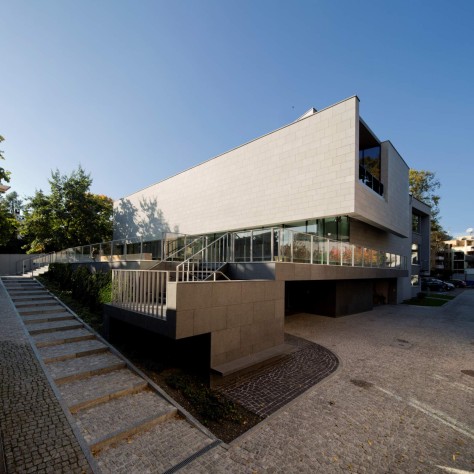
Made up of simple glass and sandstone surfaces, the façades are composed in correspondence with the analogous forms of the existing outdoor architectural elements in front of the Manggha – the ramps and the stairs. The diagonal upper part of the south elevation corresponds to the diagonal lines of the balustrades on the ramps in front of the Museum building. Calm, simple and reserved in expression, the architectural form of the new structure provides a discreet background for the main building, thus foregrounding its characteristic architectural expression.

Along ul. Konopnickiej, the proposed side line of the building corresponds to the direction set by the curb and pavement, initiating a new alignment of the frontage along the street towards the Dębnicki Bridge. To the north and east, the building is flanked by, and constitutes an architectural continuation of, the Japanese Language School, erected by the Kyoto–Krakow Foundation in 2004. The height of the parapet of the School building is continued by the line of the cornice on the adjacent fragment of the proposed Gallery’s façade.

The Façades
The finish materials specified for the façades are in tune with the character and colour schemes of the neighbouring buildings. The main material used in the upper parts of the elevations is the Italian Pietra Serena sandstone, while the lower sections are finished in black granite. The grey front façade corresponds to the colour of the Manggha’s roof, clad with titanium zinc sheet, and of the elevations of the Japanese Language School. The neutral and synthetic form of this elevation has been attained by eliminating window openings from the front wall. Source by Ingarden & Ewý Architekci.

Location: Krakow, Poland
Architects: Ingarden & Ewý Architekci (IEA)
Co-designer: Jacek Ewý
IEA Team: Jacek Dubiel (design project manager), Piotr Hojda, Sylwester Staniucha, Sebastian Machaj, Piotr Urbanowicz, Bartosz Haduch, Sylwia Gowin, Dariusz Grobelny, Tomasz Żełudziewicz, Enio Ferreira, Jakub Wagner, Jakub Turbasa, Marcin Głuchowski, Michał Konarzewski
Interior design: Ingarden & Ewý Architekci, Agnieszka Cwynar-Łaska, Marta Spodar
Landscaping design: Land-Arch / Karolina Bober, Małgorzata Tujko
Structural engineer: GSBK Biuro Konstrukcyjne – Mariusz Szefer, Samsoor Shaheed, Przemysław Ruchała
Electrical installations: Hamel Biuro Projektowe – Stanisław Hamerski, Piotr Kmietowicz, Bogdan Milka, Gabriel Barut, Insap – Arkadiusz Milka, Tomasz Żuk
Water supply & sewerage: Bestpro – Beata Stępień, Tomasz Widuch
HVAC, central heating: Introinstal – Ireneusz Doncer, Piotr Petryk, Małgorzata Kurek
Road design: Zdzisław Krzysztoforski
General contractor: Przedsiębiorstwo Budownictwa Przemysłowego “Chemobudowa – Kraków” SA, Wiesław Żurowski, Jerzy Mendel, Kazimierz Łącki (contract managers), Tomasz Gawor (site manager), Ryszard Słowik, Michał Pietras, Robert Poliński
Contract engineer: Portico Project Management sp. z o.o. i Wspólnicy sp.k., Zbigniew Boroń (contract director), Jurand Podgórny (project manager), Agnieszka Jasińska (building trade inspector), Bogusław Mróz (electrical installation inspector), Wacław Bednarczyk (sanitary installation inspector), Sabina Rzeszutek (project administrator)
Client: Manggha Museum of Japanese Art and Technology, Andrzej Wajda (idea initiator), Bogna Dziechciaruk-Maj (director), Daniel Seidler, Elżbieta Wiorek, Paulina Podstawa, Anna Trzaska
Volume: 10,743 cu.m
Total floor area: 2,675.2 sq.m
Net floor area: 1,954.6 sq.m
Exhibition room (Gallery 1): 263 sq.m
Exhibition room (Gallery 2): 260 sq.m
Entrance hall: 160 sq.m
Storage: 411 sq.m
Parking garage: 354 sq.m (22 places)
Year Opening: 22 June 2015
Photographs: Krzysztof Ingarden, Courtesy of Ingarden & Ewý Architekci

